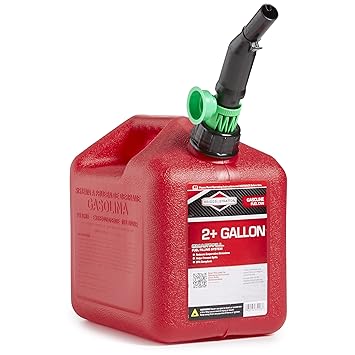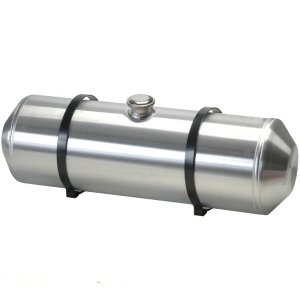I picked up a 2 gallon, Briggs & Stratton gas can that fits very nicely in the frunk:
https://www.walmart.com/ip/Briggs-Stratton-2-Gallon-Gas-Can/20682774?wmlspartner=wlpa&selectedSellerId=0&wl13=5703&adid=22222222237260393564&wl0=&wl1=g&wl2=c&wl3=108838446030&wl4=pla-127089431072&wl5=9012720&wl6=&wl7=&wl8=&wl9=pla&wl10=8175035&wl11=local&wl12=20682774&wl13=5703&veh=sem
I plan to modify the cap to provide a gravity fed, fuel line to the filler tube just above where it comes into the gas tank with a 1/4" (~16 mm), braided fuel line to a quick disconnect connector. Around town, the can won't be in the car so the sealed connector will be stowed in the frunk.
When we go on a trip, the two gallon, auxiliary can will be filled and put in the frunk, inverted, and connected to the braided fuel line. It will then work like a hamster water bottle. As the gas level in the filler tube goes down, air from the tank will bubble up through the gas line releasing gasoline from the spare can into the tank. In effect, replenishing the tank in a controlled fashion. We're not talking a huge gas flow, just enough to keep the tank topped off.
When this auxiliary tank is dry, the regular tank will begin empty normally so we will know when it is time to refuel.
Refueling will consist of removing the auxiliary can and unscrewing the filler cover. Both the car and the can will be filled and the auxiliary can put back in the car and connected to the braided hose, quick release. Four gallons should provide about 140-160 miles gas range which will significantly improve block time.
Bob Wilson


